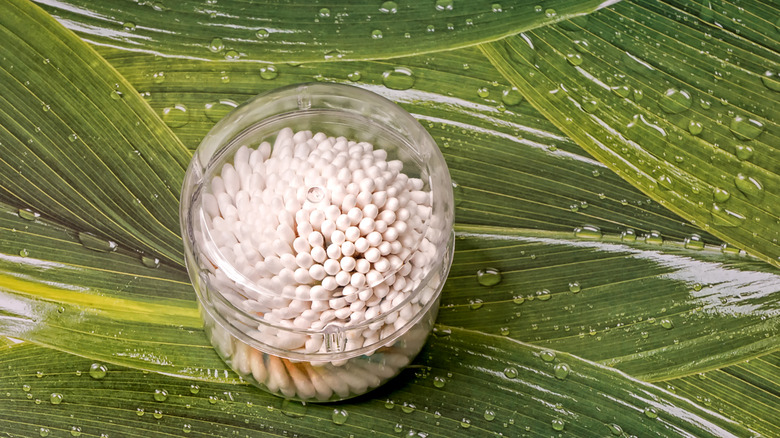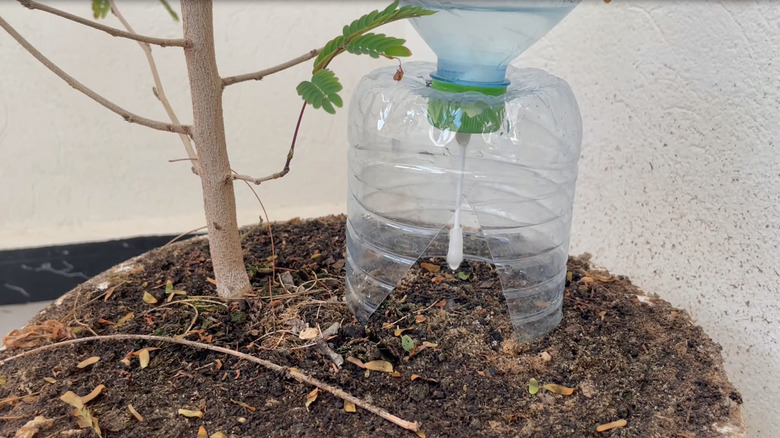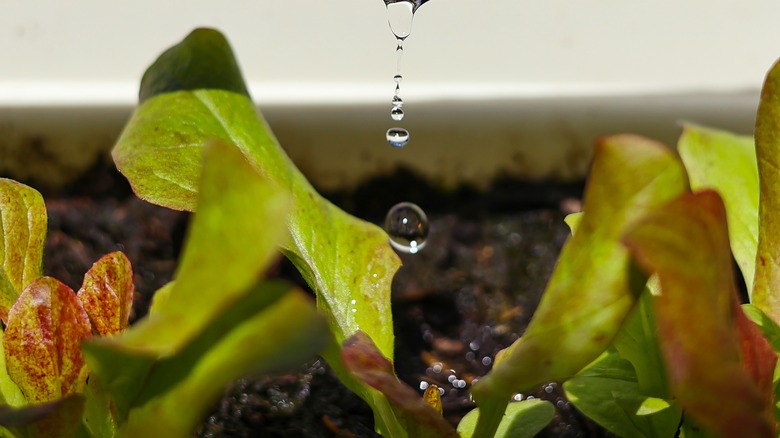How To Use A Cotton Swab To Keep Your Plants Hydrated
Houseplant enthusiasts have a new tool to keep their indoor plants well-hydrated — the humble cotton swab. Usually associated with personal care or medical use, the cotton swab is now making waves in indoor plant care. This solution helps to maintain the ideal moisture level in the soil, preventing overwatering while also ensuring consistent hydration, and is particularly beneficial for plant species that thrive in consistently moist soil conditions.
Setting up this unique watering system involves a few easy steps. First, gather the necessary materials, including cotton swabs, a small water reservoir like a plastic bottle, a chopstick, and your chosen plant. To begin, simply take the bottle and poke a hole in the cap, then insert one end of the cotton swab through it. Grab the chopstick and tape it to the side of the bottle; ensure that the stick is about 6 inches taller than the bottle. Next, fill the bottle with some water and seal it.
Now you just need your plant. Grab it and turn the bottle upside down (cap toward the ground), and plant the chopstick into the soil. There should be 1 to 2 inches of room for the cotton swab to drip water down into your potted plant. The cotton swab acts as a bridge, drawing water down from the reservoir (bottle) and gradually releasing it into the plant's soil, basically a DIY drip system. Mind-blowing and so easy to do it yourself, makes the science of it all the more interesting.
The science behind this method
So, why does it work? By placing one end of the cotton swab into a reservoir of water and the other into the plant soil, water is gradually drawn down the cotton swab and introduced slowly but consistently into the soil.
This simple, innovative watering technique is particularly useful for small houseplants or growing plants in small containers, such as African violets, venus flytraps, peace lilies, or snake plants. It ensures your small houseplants get the steady hydration they need without the risk of over or under-watering them. However, it is advised against using this technique for plants that prefer dry-out periods between waterings, such as succulents.
In addition to its practical benefits, the cotton swab watering method can be a fun and educational experiment for kids and adults alike. This ingenious yet simple method truly marries science with plant care, fostering an environment where your indoor plants can thrive with only a little maintenance.
Maintenance and advantages of the cotton swab watering technique
For maintaining the system, it is essential to regularly check and refill the water reservoir. Monitoring the plant's health is also necessary to determine if any adjustments to the watering process are needed.
The benefits of the cotton swab watering technique are manifold. It's a lifesaver for busy individuals or frequent travelers who may not always have the time for regular watering. By providing a continuous source of hydration, this technique prevents both overwatering and underwatering, which are common problems in indoor plant care.
Another major advantage for those with a green thumb is that cotton swabs are eco-friendly. They are widely available, and since they are made primarily of cotton, they can be composted after use, contributing to sustainable indoor gardening practices.
The simplicity and effectiveness of the cotton swab watering technique make it an ideal plant care trick in our increasingly busy world, and serve as a reminder that inventive solutions can be as simple as a cotton swab.


